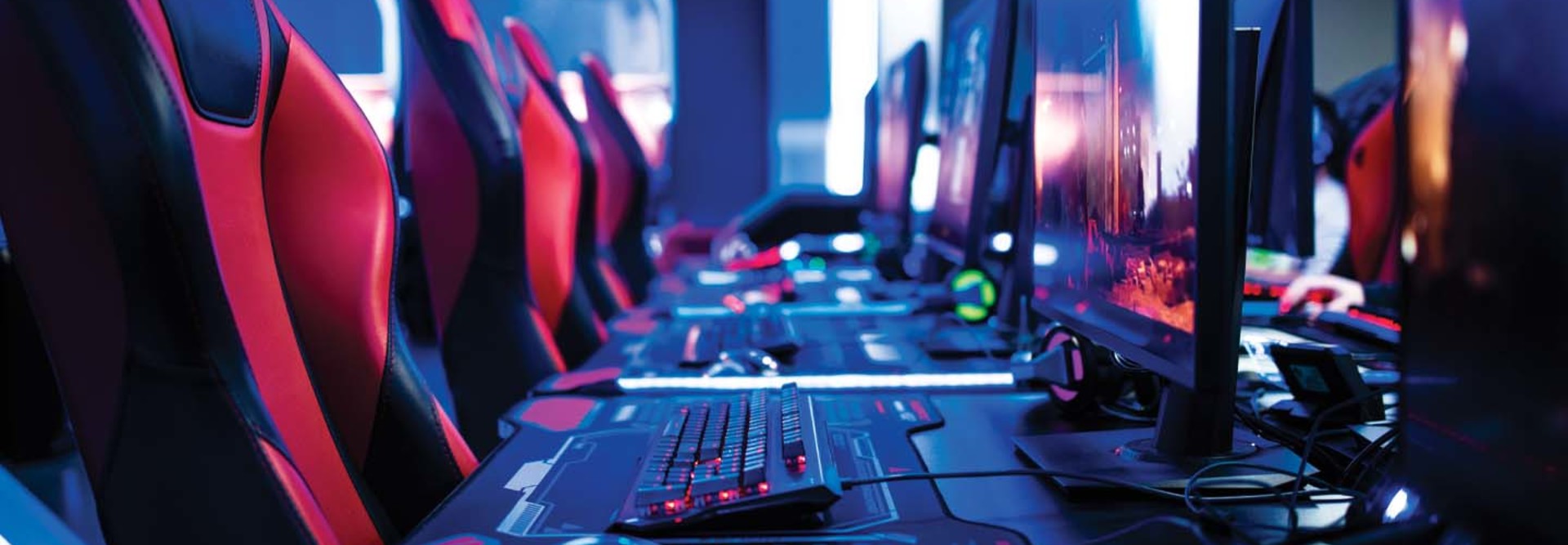One simple upgrade is to purchase comfortable, customized gaming chairs like those from Spectrum, which include removable nameplates on the back. Use those nameplates to identify gamers by names or their gamer tags, then hand them off at graduation as mementos.
Other design tips include incorporating school logos and colors wherever possible, something done particularly well by the University of North Carolina at Greensboro and Old Dominion University. These arenas use customized lighting that changes when athletes are in competition and feature displays for participants and spectators to see the action.
Some colleges have also started incorporating virtual reality and racing simulators to improve the functionality and look of gaming rooms, giving gamers bonus experiences not connected to their standard gaming PCs. This kind of improvement can be especially beneficial for multipurpose esports spaces that draw casual gamers in addition to housing competitive teams.
Designers should also consider the broadcast setup of a space, particularly if they’re not going to create a large spectator area. Esports competitions are popular when streamed on platforms like Twitch, and to ensure a quality broadcast, arenas should have a play-by-play desk — plastered with a logo and sharply painted for good measure — along with production lighting, sound, video equipment and switchers. There is a critical overlap between content culture and esports that should not be overlooked.
LEARN MORE: How schools and colleges can build a robust esports program.
Picking the Right Esports Arena Design for Your School
From obtaining high-end gaming PCs to creating special design flourishes, planning an esports arena can be a time-consuming and elaborate process.
As the esports space has become more crowded, a good arena has become necessary just to keep up with other schools around the country, and it’s becoming more difficult to create a design that stands out from the crowd. On top of that, supply chain issues have been backing up production from design to building, anywhere from six months to a year in many cases.
The experts at CDW•G have been at the forefront of esports arena designs and offer custom solutions for schools to create the arenas they need to keep their students engaged.
Standard service through CDW•G features all the basics and more, including 2D room designs, 3D renderings, layouts for chairs and gaming hubs (group them together in pods so teammates can work together more easily), placement of monitors, and compliance with accessibility requirements. And for a full-service experience, a CDW•G partner like Horizon AVL can cover the job from start to finish, including full installation at the time of delivery.
Esports arenas are only getting flashier, more powerful and better designed, but with the right plan, creative thinking and an experienced partner, your esports arena can keep students engaged and coming back.
This article is part of EdTech: Focus on Higher Education’s UniversITy blog series.












